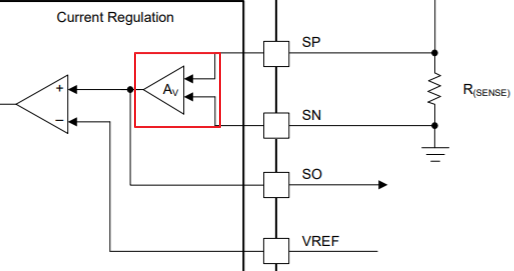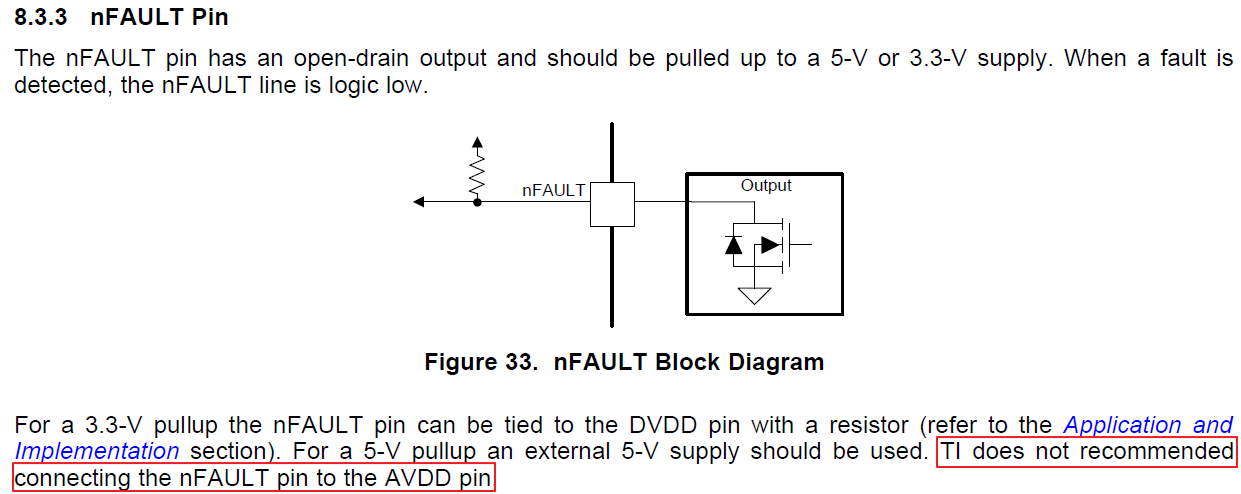Hi team,
I'm writing you to ask two questions about DRV8702-Q1.
Question 1: Stall current detection failed
The customer use Standard PWM Control Interface mode, during toff period, the current drops. The required stall current is 20A, the customer doesn't use internal current detection of DRV8702. They use ADC integrated in the MCU to sample current, and when the current ups to 20A, the MCU control the motor stop. The ADC's sampling rate is 4k, which is much smaller than PWM's frequency(20k).
The problem is that when the stall occurs, sometimes it can't detect the stall current.
Could you please help give a solution about the question?
In addition, if I add a RC filter on the output of the amplifier(shown as below), how should I set the value of R and C so that it can't affect the performance of the amplifier. Could you tell me the input resistor and feedback resistor of the amplifier?
Question 2: nFault pin
Why is the nFault pin not recommended to connect to AVCC? Could you please help explain it?
Thank you very much!
Sherry



